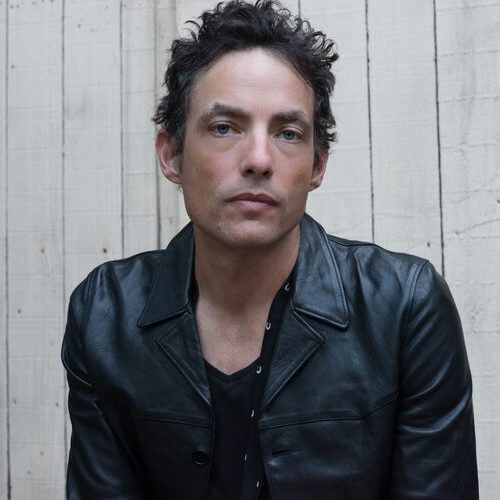Lodging Special:
Chautauqua Winter Wonderland – Save 15%
- Pet-friendly lodging options
- Flatirons hiking and snowshoeing
- Dining and concerts

Doors: 6:30 PM
Showtime: 7:30 PM

After over a decade of relentless touring and recording in all but complete obscurity, the Texas-bred quasi-collective suddenly found itself held up by the press and public as one of the major figures in the jazz world. But as the category names for all five of the band’s Grammy® awards would indicate (Best R&B Performance in 2014, Best Contemporary Instrumental Album in 2016, 2017, 2021, and 2023), Snarky Puppy isn’t exactly a jazz band. It’s not a fusion band, and it’s definitely not a jam band. It’s probably best to take Nate Chinen of the New York Times’ advice, as stated in an online discussion about the group, to “take them for what they are, rather than judge them for what they’re not.”
Snarky Puppy is a collective of sorts with as many as 20 members in regular rotation. At its core, the band represents the convergence of both black and white American music culture with various accents from around the world. Japan, Argentina, Canada, and the United Kingdom all have representation in the group’s membership. But more than the cultural diversity of the individual players, the defining characteristic of Snarky Puppy’s music is the joy of performing together in the perpetual push to grow creatively.
Their latest Grammy® winning album – Empire Central – was released in September 2022. Its sound is big and bold, chill and laid back, rooted in its native culture while reaching outward, forward bound. With 16 new compositions, the group looks fondly at where it’s come from, confident in the polished power from which its members continue to build the unique Snarky Puppy sound.
The sound now rises like a skyscraper from a 21st-century orchestra comprising three guitarists, four keyboardists, two brass, two reeds, a violinist, multiple percussionists and drummers, and the accomplished, yet modest, Michael League keeping it all together with his bass.
“Our soundscape has expanded dramatically over the years” says League. “When the band started, we were jazzier, brainy, and music-oriented. Moving into the Dallas scene we became groovier, more emotional, deeper in a sense. We focused more on communicating a clear message, understandable to a listener without dumbing things down”.
“Snarky Puppy has always been a band that prioritizes the sound of music” says League. “On this record, the songs ended up being a lot more direct and funkier than those on our previous records. I think it reflects the many moods of the city’s scene”. “Our rule is that it can’t sound like it sounded before” he continues, “the music has to feel like it’s moving somewhere”
And moving somewhere it most definitely is. Empire Central shouts from the rooftops how far Snarky Puppy has come since ten friends got together at the University of North Texas in 2004. It also raises the question – Where will Snarky Puppy go next? For Snarky Puppy fans, the answer to this question is a very exciting prospect.
The Grammy Nominated multi-instrumentalist has created a project that is a truly ambitious take on going solo. Wood is playing everything — analog synths, drums, bass, guitar, and vocals — at the same time! As well, he’s recording every song in one pass with no overdubs, click track, or pre-recorded backing tracks. “That’s why it’s called fOUR, because it’s me with four limbs playing four instruments at once.” fOUR veers from complex, spacey prog rock to electronic-tinged instrumentals.
Currently, fOUR has released a number of viral videos on YouTube and Facebook (where some of the clips have topped one million views). fOUR’s first full-length record “X.it” was released in the summer of 2018, followed by a performance on NPR’s “Tiny Desk” in January 2019. Since then, fOUR has been touring around the globe with his one-man show, most recently opening for Snarky Puppy in support of their new record. Nate Wood – fOUR’s second record was released via GroundUPmusic in April of 2023.
“Wood’s brain splits attention between four synthesizers, an electric bass, and a drum kit, all while singing about futurism. Wood plays all of fOUR’s tunes in one take. No backing tracks. No overdubs. Nate Wood pulls us into an industrial, neon dystopia with tunes that stand alone as headphone music without the accompanying visuals, meticulously crafted, and with precise execution. This isn’t novelty music. You’re hearing (and seeing) a mastermind songwriter and mad scientist at work.” – NPR Music
Nate is a founding member of the Grammy-nominated quintet Kneebody. He has also performed or recorded with many notable artists including Taylor Hawkins and the Coattail Riders, Dave Grohl, Brian May and Roger Taylor (Queen), Chris Squire (Yes), Elliot Easton (The Cars), Chaka Khan, Wayne Krantz, Billy Childs, Tigran Hamasyan, Donny McCaslin, and many others. Nate is endorsed by Gretsch Drums, Istanbul Agop Cymbals, Promark Sticks, Remo Drumheads, Drum Workshop Hardware, D’addario Strings, Aguilar Amplification, and Moollon instruments.


Doors: 6:30 PM
Showtime: 7:30 PM

What began as a casual jam session over a decade ago has become one of today’s leaders in the Americana/Bluegrass music world. The venerable Rounder Records immediately signed the band and released their eponymous debut in 2008 that scored their first GRAMMY nomination for Best Country Performance by a Duo or Group w/ Vocal for the song Blue Side Of The Mountain. Again in 2010, the group’s sophomore effort “Reckless”, received two more nods for Best Bluegrass Album and Best Country Performance by a Duo of Group with Vocal, courtesy of the universally popular hit Where Rainbows Never Die.
The group’s star continued to rise with the release “Hammer Down” that debuted at #1 on the Billboard Bluegrass Charts. Their accomplishments continued with the highly anticipated 2015 “The Muscle Shoals Recordings” that also won a GRAMMY for Best Bluegrass Album, as well as three IBMA nominations for Album, Song, Songwriter (Tammy Rogers) and Liner Notes (Peter Cooper) of the Year honors.
In 2018 the group made Grand Ole Opry history as the quintet was joined by superstars John Prine and Bill Murray on the revered stage to perform. Other accolades include a cameo in the Murray flick “Get Low,” music placement in various TV and movies including the popular drama “Yellowstone,” and specially recordings with the military group Six String Soldiers.
In 2020, Tammy Rogers, Michael Fleming, Richard Bailey, Brent Truitt and Kelvin Damrell (his first project as lead vocals) released the chart-topping “Bad For You” to both industry and media aplomb.2021 brought the latest member on board, lead singer Matt Dame.
The quintet tours an average of 75 dates annually while continuing to bring world-class music to people.

Doors: 6:30 PM
Showtime: 7:30 PM

Indigo Girls have partnered with PLUS1 so that $1 per ticket goes to supporting Honor The Earth and their work to create awareness and support for Native environmental issues and develop needed financial and political resources for the survival of sustainable Native communities.
Released in 1989, Indigo Girls’ eponymous major label debut sold over two million copies under the power of singles “Closer to Fine” and “Kid Fears” and turned Indigo Girls into one of the most successful folk duos in history. Over a thirty-five-year career that began in clubs around their native Atlanta, Georgia, the multi-Grammy-winning duo of Emily Saliers and Amy Ray has recorded sixteen studio albums, sold over 15 million records, and built a dedicated, enduring following across the globe. Rolling Stone describes them as the “ideal duet partners.” Committed and uncompromising activists, they work on issues like immigration reform (El Refugio), LGBTQ advocacy, education (Imagination Library), death penalty reform, and Native American rights. They are co-founders of Honor the Earth, a non-profit dedicated to the survival of sustainable Native communities, Indigenous environmental justice, and green energy solutions.
Their latest record, Look Long is a stirring and eclectic collection of songs that finds the duo of Amy Ray and Emily Saliers reunited in the studio with their strongest backing band to date. “We joke about being old, but what is old when it comes to music? We’re still a bar band at heart,” says Saliers. “While our lyrics and writing approach may change, our passion for music feels the same as it did when we were 25-years-old.” “As time has gone on, our audience has become more expansive and diverse, giving me a sense of joy,” she adds. To hear those collective voices raise into one, singing along and overpowering the band itself, one realizes the importance Indigo Girls’ music has in this moment. In our often-terrifying present, we are all in search of a daily refuge, a stolen hour or two, to engage with something that brings us joy, perspective, or maybe just calm. As one bar band once put it, “We go to the doctor, we go to the mountains…we go to the Bible, we go through the work out.” For millions, they go to the Indigo Girls. On Look Long they’ll find a creative partnership certain of its bearings, forging a way forward.


Doors: 6:30 PM
Showtime: 7:30 PM

Rock ‘n’ roll is often hard to define, or even to find, in these fractured musical times. But to paraphrase an old saying, you know it when you hear it.
And you always hear it with the Wallflowers. For the past 30 years, the Jakob Dylan-led act has stood as one of rock’s most dynamic and purposeful bands – a unit dedicated to and continually honing a sound that meshes timeless songwriting and storytelling with a hard-hitting and decidedly modern musical attack. That signature style has been present through the decades, baked into the grooves of smash hits like 1996’s Bringing Down the Horse as well as more recent and exploratory fare like 2012’s Glad All Over.
Even so, in recent years, Dylan – the Wallflowers’ founding singer, songwriter and guitarist – has repeatedly stepped outside of his band, first with a pair of more acoustic and rootsy records, 2008’s Seeing Things and 2010’s Women + Country, and then with the 2018 film Echo in the Canyon and the accompanying soundtrack, which saw him collaborate with a host of artists classic and contemporary, from Neil Young and Eric Clapton to Beck and Fiona Apple.
But while it’s been nine long years since we’ve heard from the group with whom he first made his mark, the Wallflowers are silent no more. And Dylan always knew they’d return. “The Wallflowers is much of my life’s work,” he says simply.
Plus, he adds with a laugh, “It’s pretty hard to get a good band name, so if you have one, keep it.” Good band name aside, that life’s work continues with Exit Wounds, the brand-new Wallflowers studio offering. The collection marks the first new Wallflowers material since Glad All Over. And while the wait has been long, the much-anticipated record finds the band’s signature sound – lean, potent and eminently entrancing – intact, even as Dylan surrounds himself with a fresh cast of musicians.
Which, the front man is quick to point out, is not all that unusual. “The Wallflowers has always been a vehicle for me to make great rock ‘n’ roll records,” he says. “And sometimes the lineup that makes the record transfers over into touring, and sometimes it doesn’t. But my intention is always to make the Wallflowers record I want to make, using the musicians I have beside me.”
Dylan’s vision has always been the core of the Wallflower’s music. How he chooses to express that vision, however, is what makes a song a Wallflowers song. “I usually just let the songs tell me what kind of arrangements they need,” he says. “And if they’re asking for full-band electric arrangements, then that’s what the Wallflowers provide. And I knew I wanted to make a full-band electric record this time out.”
And made one he has, with one special guest on board – Shelby Lynne, who lends her voice to three of the album’s tracks. “I hadn’t met Shelby before, but like most people, I’ve been a fan of hers for quite some time,” Dylan says. “She has one of those voices that’s very uncommon, very unique, very rare.”
But there was more to their duet than just a mutual appreciation. “You can have your favorite singer come in, but it doesn’t mean you’ll have any connection – there has to be more than that,” Dylan continues. “And as soon as I heard Shelby sing, I knew we had something.”
That “something” is present throughout Exit Wounds, which, true to its title, is an ode to people – individual and collective – that have, to put it mildly, been through some stuff.
“I think everybody – no matter what side of the aisle you’re on – wherever we’re going to next, we’re all taking a lot of exit wounds with us,” Dylan says. “Nobody is the same as they were four years ago. That, to me, is what Exit Wounds signifies. And it’s not meant to be negative at all. It just means that wherever you’re headed, even if it’s to a better place, you leave people and things behind, and you think about those people and those things and you carry them with you. Those are your exit wounds. And right now, we’re all swimming in them.”
To be sure, Exit Wounds is populated by scarred souls that “used to rumble, used to roar,” of “nobodies drinking flat beer,” and those who’ve been “abandoned and locked out and pressed to the fire.” Throughout, Dylan’s lyrics are specked with images of spears and swords and battle-worn flags being raised, of wayward buses and battered ships, riderless horses and lost planes.
Of course, ask Dylan what these songs are about, and, well, like most practiced songwriters, he’s not going to tell you. “I’m always a little cautious when people ask that,” he says. “Not because it demystifies the songs, but more because I think it’s belittling to the listener to have to be ‘told.’ I usually find that if you have to do that for someone, you probably didn’t hit your mark.”
That said, Dylan will at least acknowledge that the tracks on Exit Wounds reflect the tumultuous times in which they were written. “The climate affects how you feel, which affects how you’re writing songs, even if you’re not writing specifically about current events.” He turns to the late John Prine to illustrate his point. “If we still had John Prine, I don’t think he’d be writing songs specifically about current affairs, but he’d probably be writing songs about characters affected by current affairs. I think that’s mostly what I do.”
As far as Exit Wounds, Dylan continues, “I’m the same writer I’ve always been – I was just also writing during a time when the world felt like it was falling apart. That changes the way you address even the simplest things, because you have panic in your mind all the time. You have anxiety. And you also have hope. And it’s all in there.”
When it came to realizing these new songs on record, Dylan assembled a backing band of musical associates – “people that I’ve wanted to play with or that I have played with through the years” – and headed into the studio under the watchful eye of producer Butch Walker.
As for what Butch brought to the sessions? Beyond his pedigree as an in-demand producer and first-rate singer-songwriter and musician, he’s also, Dylan says, “someone I’ve known a long time, and that was important to me. Because you go through a lot when you make records, to be honest. When you’re young, you’re taught that if you don’t have conflict in the studio, then you’re probably not doing anything good. But I don’t believe that. And so it was more of a joyful experience making this record.”
That joyful experience extended to Dylan’s interplay with his fellow musicians. “This was not the type of thing where it’s a rotating cast and you call a different drummer for each song, or you pull out the Rolodex and ring the local sessions guys,” Dylan says. “The record was made as a band – the five Wallflowers.”
And to Dylan, a band, even one with a constantly shifting lineup, is a sacred thing. “I’ve always been a believer in collaboration,” he says, “and no matter who I’m playing with I’ve always tried to include them very heavily. Otherwise, why would they be around? Because I do think bands, whether it’s a long standing group or just five people who are working together for that one stretch of time, make better rock ‘n’ roll records than solo artists.”
He laughs. “I mean, it’s not 100 percent true, but it’s usually true.”
At the end of the day, Dylan continues, “It’s just exciting to have guys playing in a room together. That’s how you get the one plus one equals three factor, you know? That’s the magic.” For Dylan, Exit Wounds is the next chapter in a career devoted to chasing – and capturing – that magic.
“I came up in an era of great rock ‘n’ roll bands making great music, and it’s the way I always imagined I would do it one day,” he says.
“So that’s always been my vision with the Wallflowers – to be a great rock ‘n’ roll band. And I’ve worked on it for 30 years now and I still have a lot to say. It’s something I started a long time ago, and it’s far from finished.